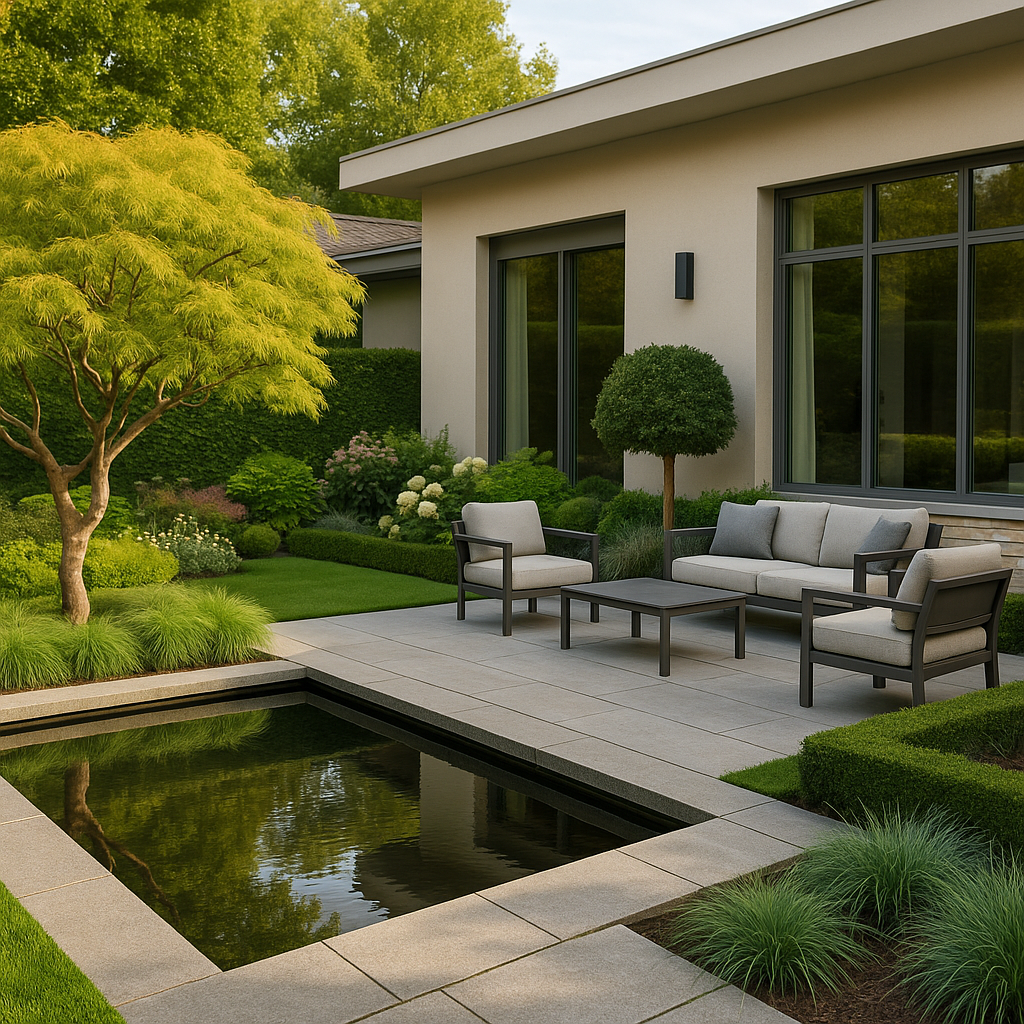Luxury outdoor environments and sustainable developments increasingly demand a thoughtful approach that goes beyond aesthetics. When professionals define landscape geography, they are not only describing a space but also connecting design with natural systems. This holistic perspective ensures that outdoor spaces harmonize with architecture, ecology, and human experience. Whether in luxury residences, green developments, or public environments, understanding landscape geography creates a foundation for functional and beautiful outdoor spaces.
The Meaning of Landscape Geography in Design
Landscape geography merges natural science with architectural practice. It involves studying how terrain, water systems, vegetation, and climate interact with human-built environments. Designers, builders, and planners use this understanding to shape landscapes that are sustainable, resilient, and visually appealing.
To define landscape geography is to see every project as part of a broader ecological system. For example:
- Slopes dictate drainage and stormwater management.
- Soil types influence plant selection.
- Sun and shade patterns guide placement of outdoor rooms.
- Local biodiversity enriches long-term ecological balance.
This approach ensures that design elements—stonework, planting, water features, and structures—are not only decorative but also integrated into the natural order of the site.
Core Principles: Design Meets Natural Systems
1. Topography and Flow
Understanding landform is the first step when architects and builders define landscape layouts. Natural contours guide where to place retaining walls, walkways, or terraces. Crews often rely on tools like a scissor lifter to maneuver heavy stone blocks into sloped or elevated sections with precision. Similarly, a slab lifter ensures accurate placement of stone and concrete features without damaging their structural integrity.
2. Water Systems
Landscape geography pays close attention to hydrology. Drainage patterns, rainwater harvesting, and irrigation design are critical. In luxury homes, infinity pools and reflecting ponds must be balanced with sustainable systems that prevent runoff or flooding. In green developments, wetlands and bioswales become part of the design narrative.
3. Vegetation and Ecology
Native plants and climate-adapted species play a central role in defining landscape sustainability. They minimize water consumption, resist pests, and attract pollinators. A luxury residence might highlight sculpted olive trees or Japanese maples, while an urban garden could rely on vertical greenery and drought-resistant shrubs.
4. Human Systems and Use
Landscape geography also addresses how people interact with space. Pathways, gathering areas, and transitions between indoor and outdoor zones all reflect the integration of natural and designed systems. Accessibility, safety, and comfort are just as important as visual appeal.
Builders and Crews in the Landscape Geography Process
Luxury landscaping projects highlight the importance of skilled builders and crews who execute the design vision. In fact, entire articles explore how Builders Define Landscape Features in Luxury Homes and how Crews Define Landscape Processes in Outdoor Spaces. From structural stonework to advanced irrigation, their expertise ensures that landscapes not only look elegant but function seamlessly.
In many high-end projects, precision lifting tools and cranes are as crucial as horticultural knowledge. Heavy granite steps, marble fountains, or glass pergolas require specialized handling. By using lifters and cranes, crews preserve the integrity of materials while reducing environmental disruption.
Green Developments and the Broader Geography
Sustainability lies at the heart of modern landscaping. Articles like Define Landscape Work in Green Developments emphasize how developers integrate ecological systems into urban and suburban environments. From rain gardens to rooftop ecosystems, landscape geography ensures green spaces act as ecological infrastructure.
Key strategies include:
- Restoring habitats within urban zones.
- Using permeable paving to allow water infiltration.
- Designing corridors that link green patches for wildlife movement.
- Leveraging renewable materials and energy-efficient systems.
These innovations elevate landscapes beyond decorative features, transforming them into vital components of sustainable cities.
Landscape Geography in Architectural Integration
The role of landscape geography extends into architectural dialogue. It ensures outdoor spaces reflect the same sophistication as indoor design. Homes with floor-to-ceiling glass walls benefit from external views shaped by natural and designed elements. Architects incorporate courtyards, terraces, and structured plantings to frame sightlines.
For homeowners, integrating high-quality materials—travertine, teak, granite—signals permanence and elegance. Meanwhile, innovations like Insulating Glass Unit Benefits for Energy Savings enhance energy efficiency, keeping interior spaces comfortable while blending seamlessly with landscaped exteriors.
The Future: Landscape Geography as an Art and Science
As luxury homes, public gardens, and urban developments evolve, the ability to define landscape geography will remain essential. It is both art and science: shaping beauty while respecting natural systems. Professionals draw on principles of ecology, engineering, and architecture to craft environments that enrich human life while sustaining the planet.
- In luxury homes, the focus is on curated elegance—water features, geometric layouts, and premium plantings.
- In public gardens, artistry highlights cultural expression and biodiversity.
- In green developments, systems thinking ensures resilience and ecological health.
Together, these approaches prove that landscape geography is more than a design discipline—it is a way to unite nature, architecture, and human experience into harmonious living environments.
Conclusion
To define landscape geography is to embrace the dialogue between natural systems and human design. From luxury homes to sustainable urban projects, this discipline ensures outdoor spaces are functional, beautiful, and resilient. With the combined expertise of planners, architects, builders, and crews—and with the aid of advanced tools like scissor lifters, slab lifters, and modern energy-saving technologies—landscape geography continues to shape the future of outdoor living.
By valuing design as an extension of nature, we can create landscapes that not only elevate properties but also contribute meaningfully to ecological health and human well-being.

